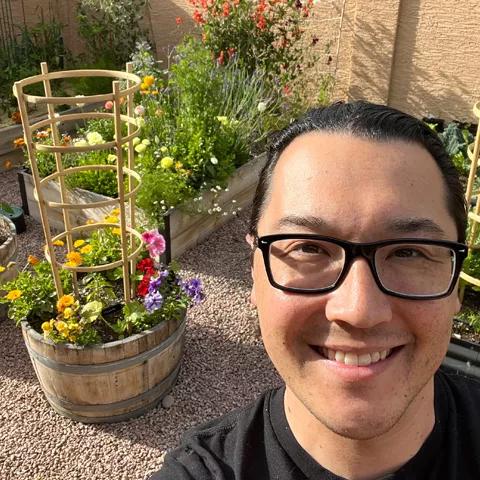Gardening in a Changing Climate
Our Home Garden Testers share their stories & strategies

As gardeners, we are probably more acutely aware of changes in our local climate — however slight — because of how it affects what we can grow, how well we can grow it, and whether the “tried and true” strategies we rely on season after season are still… true.
To learn how upward-trending temperatures, more erratic and unpredictable weather patterns, and other climate-related chaos have affected growers across the country, we went to our Home Garden Testers — our nationwide network of home gardeners that help us ensure that our products work as they should, wherever you’re growing — and asked them to share their experiences and the changing strategies they’re using to grow confidently in uncertain times.

Bryan
Southern California
California has always been plentiful with sunlight. This energy source makes our gardens abundant. At times the sun can be overwhelming. Thus we are growing cover crops as a means to capture and regulate the excess energy. This is a positive feedback effect that makes our gardens resilient. A resilient garden requires less effort and input created from external sources of energy (like electricity.)
More specifically, interplanting and cover crops in Southern California:
- Capture the overflow of the sun’s energy in the form of green manure. When decomposed, this captured energy is released into the soil as nutrients for our plants.
- When grown in very young soil (usually dirt/clay), cover crops utilize space that would not otherwise be productive. Over time, these otherwise not productive spaces can become incredibly productive as the soil biome matures.
- Planted as a cover crop and/or living mulch, the evapotranspiration mechanism that exists in plants helps regulate the temperatures of the surrounding environment. This type of space has a larger buffer and is better able to withstand the extreme temperature events that eventually arrive.
Using mechanisms found in the natural world to build a resilient garden will mean that less human-generated energy will be needed to grow it.
Some of our favorite cover crops are: cereal (aka winter) rye, buckwheat, peas, beans (fava), and borage. We are now experimenting with hairy vetch.

Carrie
Southern Rhode Island
I don’t think you can be a gardener and not notice the weather is different now. When I first started to notice changes, I had the approach of fighting it. I have since relaxed and decided to respond to what Mother Nature gives me. I avoid pesticides, replenish my soil and look for hardy plant varieties. I have added Gardener’s raised planters to my back patio. The raised planters have allowed me to closely watch my plants and easily give them extra attention. Extra attention can mean hand removing bugs, adjusting the water and rotating plants. The height of the raised planters has made a difference in noticing small changes early. I still garden in the ground too but refer to those plants as “survival of the fittest.”

Danny
Arizona
Living in the low desert of Arizona we have seen the effects of climate change affecting water levels and setting up impacts to the availability and cost of water. In order to adapt I am utilizing drip irrigation and watering in the morning or at night to mitigate evaporation. I also utilize mulch and tools such as ollas or Gardner’s self watering systems to conserve water. One of the biggest ways I feel I can help Mother Earth is to compost, recycle, upcycle and reuse as much as I can to keep materials out of landfills where they would produce greenhouse gasses and take decades to decompose.
Print this Article:
Get the Dirt
Stay up to date on new articles and advice. Please fill out the information below.

